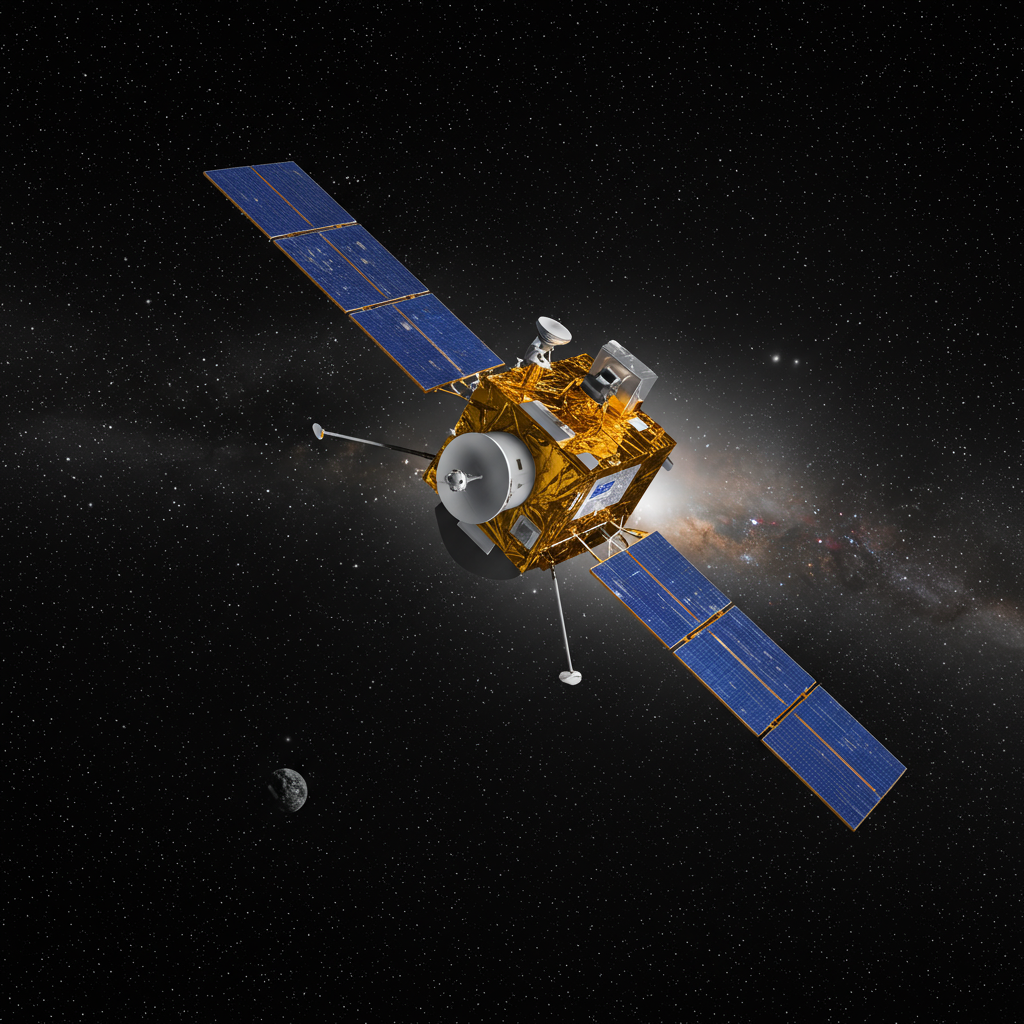America’s space agency is navigating a period of profound uncertainty, marked by looming budget cuts, potential job losses, and a vacuum in permanent leadership. A recent town hall meeting intended to address employees reportedly highlighted the deep challenges facing NASA, with attendees describing the atmosphere among senior managers as strained. This internal gathering, held with limited public notice and a subsequently removed video stream, offered a glimpse into the difficult conversations now taking place within the agency regarding its future direction and workforce size.
Facing Deep Budget Cuts
At the heart of nasa’s current turmoil is a proposed budget for fiscal year 2026 from the White House Office of Management and Budget. This plan calls for a dramatic reduction in NASA’s funding, slashing the topline budget by nearly 25 percent. This cut would decrease the agency’s funding from $24.8 billion to a proposed $18.8 billion. When adjusted for inflation, this figure would represent the smallest NASA budget allocation since 1961, a time when the United States was just beginning to send astronauts into space.
The scale of this proposed cut underscores the severity of the challenges. While NASA’s acting administrator, Janet Petro, attempted to emphasize the agency’s enduring strength and upcoming missions, the sentiment among many employees and industry partners is reportedly much darker. Some internal sources have expressed extreme concern about NASA’s operational capacity under such financial constraints.
White House Directives and Downsizing Pressure
Even before the detailed budget proposal was released, NASA and other federal agencies were already under pressure from the administration to reduce their size. While mass layoffs of probationary employees seen in other departments were avoided, NASA initiated measures aimed at shrinking its workforce voluntarily. This included offering buyouts and incentives to civil servants who opted for early retirement or voluntary departure.
The agency introduced a program referred to as “deferred resignation.” Initial participation saw around 900 employees sign up. According to Casey Swails, NASA’s deputy associate administrator, this number has since increased significantly to 1,500 employees. This represents approximately 8 percent of NASA’s total workforce. The window for employees to accept this offer extends until late July.
Avoiding Involuntary Layoffs
A key message emerging from the town hall was the agency’s strategic push for voluntary departures. Leadership explicitly stated that a primary reason for offering these incentives is to minimize the potential need for involuntary staff reductions, often termed “reductions in force” or RIFs. Rumors of potential RIFs have circulated within NASA for months, creating significant anxiety among staff.
Should the agency fail to achieve sufficient staff reductions through voluntary means, involuntary layoffs remain a possibility, although leadership stated they are currently doing everything possible to avoid that path. The final decision on whether RIFs become necessary will ultimately depend on the number of employees who choose to resign voluntarily during the current offer period. Employees who are part of involuntary layoffs may not receive the same incentive packages available to those who leave voluntarily now.
Uncertainty at the Top
Adding to the instability is the prolonged lack of a permanent, politically appointed administrator. Janet Petro, an engineer with a strong background at Kennedy Space Center, was appointed acting administrator in January following the resignation of the previous administrator. However, sources indicate that Petro lacks a political power base within the current administration and is consequently limited in her ability to make significant policy decisions. Crucially, the proposed budget cuts originated externally from the White House, not internally from NASA leadership.
The process for selecting a new administrator remains unclear and potentially lengthy. A previous nominee, billionaire businessman Jared Isaacman, saw his nomination abruptly withdrawn shortly before a Senate confirmation vote, reportedly due to political factors. Brian Hughes, NASA’s chief of staff and a political appointee, speculated during the town hall that a new nomination might not occur for another six to nine months, citing other pending government appointments and complex budget negotiations with Congress as potential delays. With Congress expected to recess, a confirmation hearing, if a nominee is put forward, would likely not happen until the fall at the earliest.
Impact on Key Missions and Science
The proposed budget cuts extend far beyond staffing levels, threatening major NASA programs and scientific endeavors. Under the White House plan, core elements of the Artemis program aiming to return astronauts to the Moon – the Space Launch System (SLS) rocket and the Orion spacecraft – would be canceled after just two more planned flights. The strategy would pivot NASA towards relying on commercial providers for future human transportation to the Moon and Mars, similar to how it currently procures rides to the International Space Station.
The impact on NASA’s renowned science portfolio is particularly severe. The proposed budget would effectively halve the agency’s science budget to approximately $3.9 billion. The technology development division would also face a 50 percent reduction. These cuts could lead to scaling back research on the ISS and potentially terminating numerous robotic missions. These missions include ongoing explorations of Jupiter, journeys to study asteroids and interstellar space, and the operation of significant space telescopes. If implemented, the proposal would also mark the first time in three decades that NASA is not actively developing a Mars lander, instead looking to commercial companies for future Mars payload deliveries.
Despite the drastic cuts, Acting Administrator Petro suggested ways NASA might still pursue scientific goals, including seeking partnerships with academic institutions, private donors, or commercial companies to help fund projects. However, the overall sentiment conveyed was that NASA leadership cannot actively lobby against the White House’s budget proposal, as it represents the administration’s position.
The Role of Congress and Broader Impact
Ultimately, the final level of funding for NASA rests with the United States Congress. While the White House proposes the budget, Congress holds the power of appropriation. Lawmakers have not yet indicated their definitive stance on the proposed cuts. However, influential figures like Senator Ted Cruz have introduced alternative proposals that could restore funding for certain programs, such as the International Space Station and the SLS/Orion system, although these counter-proposals have not necessarily included increases for science programs.
The pain of NASA’s potential downsizing is also expected to ripple outward significantly. Leadership noted that a substantial portion of NASA’s budget – roughly 85 percent – goes to external contractors. A reduced budget will inevitably have a major impact on these companies and their workforces, potentially being the “bigger driver” of overall impact felt across the space industry ecosystem.
As the deadline for voluntary resignations approaches, NASA employees face difficult personal and professional decisions. The advice offered by Deputy Associate Administrator Casey Swails – encouraging employees to discuss their options with support systems like family, partners, or financial advisors – highlights the gravity of the situation and the limited direct control employees have over the agency’s future structure and funding. The immediate focus within NASA appears to be on managing the anticipated downsizing, regardless of the final budget outcome determined by Congress.
Frequently Asked Questions
What specific budget cuts are proposed for NASA in fiscal year 2026?
The White House is proposing to cut NASA’s overall budget by nearly 25 percent, from $24.8 billion down to $18.8 billion. This reduction would also include slashing the science budget by half to around $3.9 billion and cutting the technology development division by 50 percent. If enacted, this budget would be NASA’s smallest adjusted for inflation since 1961.
What is the “deferred resignation” program offered to NASA employees?
The deferred resignation program is an incentive plan offered by NASA to encourage civil servants to voluntarily leave the agency through buyouts or early retirement. This initiative is intended to help reduce the overall workforce size. As of a recent town hall, approximately 1,500 employees, or about 8 percent of NASA’s staff, had signed up for this program, with the goal of avoiding involuntary layoffs (reductions in force).
How might Trump administration plans change major NASA missions like Artemis?
Under the current administration’s proposed budget and plans, key components of the Artemis program, specifically the SLS rocket and Orion spacecraft, would potentially be cancelled after only two more flights. The strategy would shift away from government-developed hardware towards procuring transportation from commercial companies for future human missions to the Moon and Mars, similar to how astronauts are currently transported to the International Space Station.




